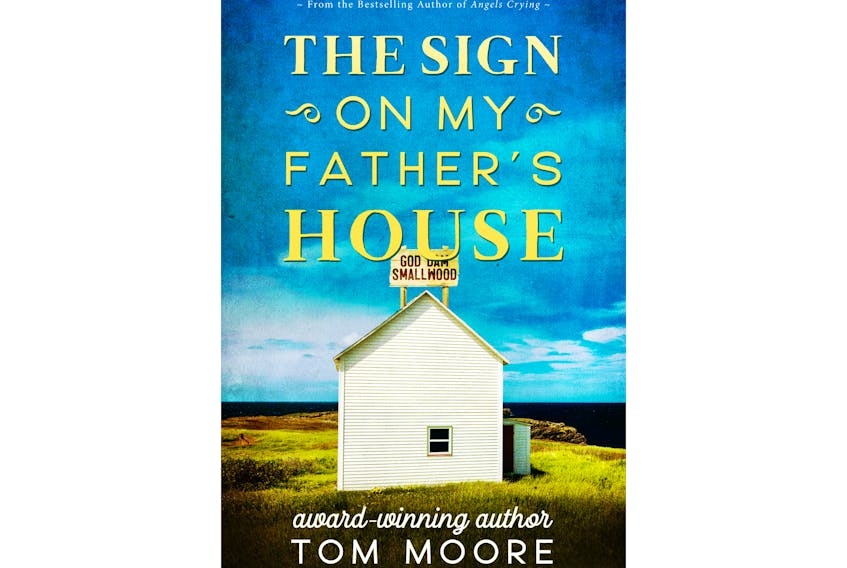When we first met in 1977 – Felix Ryan, Tom Moore and I – we three were much younger men. Since then, linear time has moved Tom and I closer to The Finish Line. Felix, of course, lives in storybook time and has aged differently, but grown older, nonetheless.
A lifetime ago, in 1977, we met in the winter issue of The Newfoundland Quarterly.
(B’ys, get this. The 1977 winter issue of The Quarterly cost 75 cents. That’s right – 75 cents. The cover price of The Quarterly’s 2019 summer issue is $9.00!)
In the 1977 Quarterly – one copy of which still exists for sure because it’s here on my desk – Felix appears as a young boy in “Winter”, an excerpt from Tom Moore’s book Good-bye Momma. Thanks to Harry Cuff, The Quarterly’s editor at the time, I’m included in the issue via “Igloo” a short story of mine. (Drop in and visit us at this link: http://collections.mun.ca/cdm/search/collection/quarterly/searchterm/vol.%20LXXIII%2C%20No.%201/order/nosort )
So, there we is and here were are, eh b’ys? All three of us rampsing around with Tom’s new book – The Sign On My Father’s House (Flanker Press).
Early pages, I wondered if Tom had me – his old Quarterly buddy – particularly in mind as he wrote.
Firstly, he says Ellen Monteau’s (keep an eye on this femme fatale) place of abode is Petley. While I never lived in the “real” Petley on Random Island, that is the place where The King planted the Walters crowd when he shipped them off to the New World, or whatever.
Secondly, Tom makes passing reference to young Billy Walters – cousin Billy, I ‘low.
Thirdly, Smallwood High’s competition in a basketball game is the Argentia Killers. And, hey, Argentia – albeit greatly changed since Felix Ryan’s youth – was, and is, just down the road from our house.
But no, I soon realized I’d prob’ly never entered Tom’s mind. I was simply trying to worm my way into the story.
So…the sign on Felix Ryan’s father’s house?
GOD DAM SMALLWOOD.
Walter Ryan damns Joey Smallwood, now in the waning days of his reign, for the ruination of Newfoundland, especially as evident in the resettlement program.
Not to dwell on Newfoundland’s history, but, to a man – okay, also to a woman, as you’ll see shortly – Joey was either hated or loved. Some folks wanted to string him up; some folks wanted to bow down and worship the sod he trod. Or, to put it another way, as I once heard a woman say in my bay-boy youth – “If Joey Smallwood come here today, I’d get down on my knees and kiss his arse.”
Walter Ryan is among the “string him up” crowd.
Other than to say that Walter nails a sign on his house and boldly takes a stand, what odds about him.
Let’s banish politics and speak of love.
"Ah, love!” are the first words in this book.
In 1966, thirteen-year-old Felix falls in love with Ellen Monteau, his Scarlett from Tara, the Siren who lures him onto the terrible reefs of love.
Felix falls in love. Ellen basically ignores him and the next thing we know years have passed and she’s married off to Dick White whose, “smell was the sweet, oily smell of Brylcreem.”
Ah, Brylcreem! B’ys, there’s an aside for another time.
Quicker than Granny caught the weasel, more time passes.
Felix is at university. Felix is done with university.
Ellen, well, remember she’s Scarlett, she’s a temptress standing ankle-deep on the sunkers and crooning enthralling love songs.
“As the end of that academic year approached,” says Felix, “Ellen decided we should get married.”
Ah, love.
What about Dick White?
Read and find out.
One thing about Dick though, as a secretive artist he has carved a community of dolls, each one a representation of a citizen of Curlew, his hometown: “Dick had created a little Curlew whose citizens were all content with life.”
Which is to suggest…
The Sign On My Father’s House is the story of a boy becoming a man, and – to some degree, if I may lamely attempt to be profound – the story of a man becoming a man, of a man putting a sign on his own house, so to speak.
And, partly, it takes a moose to make that happen.
That’s right, a moose.
Owning up concerning his encounter with the moose, Felix says, “I may even have been dozing when the moose walked out onto the road.”
Mind the friggin’ moose!
Last words in the book: “His mind (Walter’s actually. The sign is on his house after all.) was already travelling in a new orbit around the sun.”
And so is Felix’s mind, I s’pose.
Ah, LOTP! Life On This Planet.
Thank you for reading.
Hey, Tom, Felix. Nice to see you again.
Harold Walters lives in Dunville, Newfoundland, doing his damnedest to live Happily Ever After. Reach him at [email protected]









